IDM-002 Shipwreck
Filipe Castro
Country: Mozambique
Place: Ilha de Moçambique
Coordinates: Lat. ; Long.
Type: Unknown
Identified: No, although a nau Espadarte (1558) has been proposed by the treasure hunters.
Dated: 1550-1650
Introduction
This site was surveyed by the Portuguese colonial authorities in the 1960s (Fonseca 1964) and later by a team of archaeologists from Universidade Eduardo Mondlane, under the direction of Dr. Ricardo Teixeira Duarte, in the 1990s (Duarte 2012). In the early years of the 21st century, however, this area was granted to a treasure hunting company, Arqueonautas SA., who conducted a new survey.
The IDM-002 site was again located by Arqueonautas SA. during a visual survey around Ilha de Mozambique in 2001, and was later inspected by divers with metal detectors. The wreck site was lying on a slope, starting at around 5 m depth, and extended down to 32.5 m.
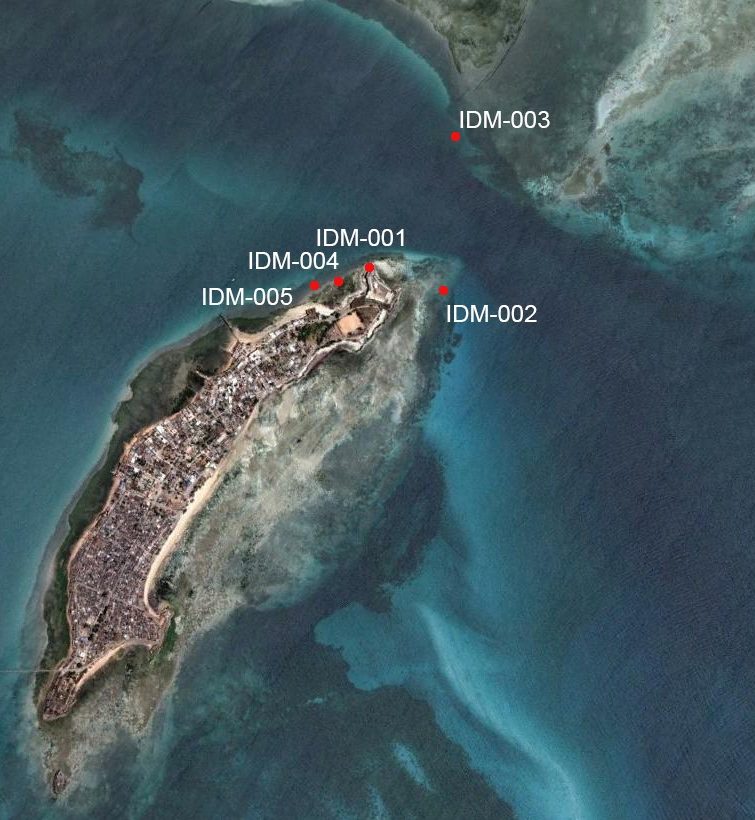
This shipwreck was referred to as the “San Sebastian Wreck” by Christie’s and by Daniel Frank Sedwick, the auction houses that sold the artifacts recovered from this site in 2004 and 2007.
The large ballast described in the reports suggests a large indiaman.
Two test pits revealed an extensive and very well preserved portion of the hull. The field of debris was typical for this type of shipwrecks and suggested a shipwreck on the return trip. the treasure hunters advanced the possibility of this being the remains of the India nau Espadarte, according to their research lost in 1558. Arqueonautas decided to salvage this cargo given the quantity of Chinese porcelain observed. The salvage operations lasted from late 2001 to late 2002.
Four intact Martaban jars were recovered from the deeper part of the shipwreck site, and the treasure hunters refer a large quantity of blue and white Chinese porcelain, intact, and thus with market value. Two anchors were mentioned as part of this site.
In 2014 a survey by archaeologists found this site abandoned and destroyed by Mr. Bound’s team. Although Alejandro Mirabal, working for Arqueonautas SA., managed to partially cover what was left of the hull remains by 2009, and mostly with stones, these hull remains were almost completely lost (Duarte 2014).
Team
This shipwreck was salvaged by a team from Arqueonautas SA. under the direction of British archaeologist Mr. Mensun Bound.
Another British archaeologist, Mrs. Margaret Rule, is mentioned in some press cuts associated to the Arqueonautas work in Mozambique, and her name was floated as part of the treasure hunters technical team, but her role in this project it is not clear.
Ballast
A large ballast pile was mentioned in the reports, with 315 m2, covering the hull remains (Bound 2004). It seems to have been entirely removed during the salvage operations.
Anchors
Two anchors are mentioned but drawings and dimensions are not published, to our knowledge.
Guns
Two bronze guns were still in situ. Alejandro Mirabal mentions “one a large muzzle-loading stone-thrower, the other a much smaller breech-loader” (2010). It is not known if there were iron guns.
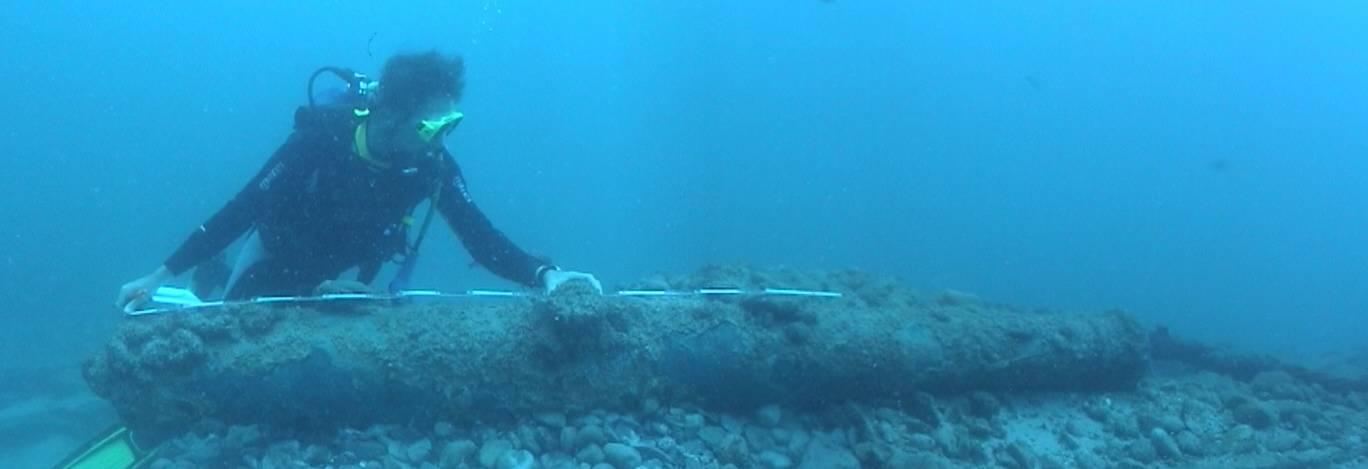
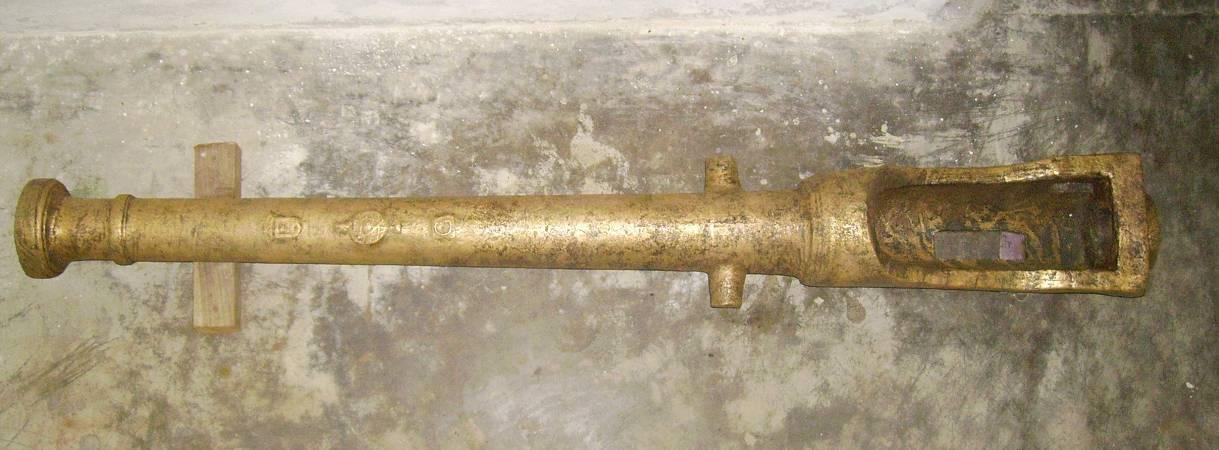
The lengths and weights of these guns were not, to our knowledge, published.
Cargo
In his report Mr. Bound’s relates the porcelains and little gold ingots found as the salvage works progress, but is almost silent about all the other ceramic materials that certainly were part of this site. Although these would have almost no market value, their archaeological value was probably enormous.
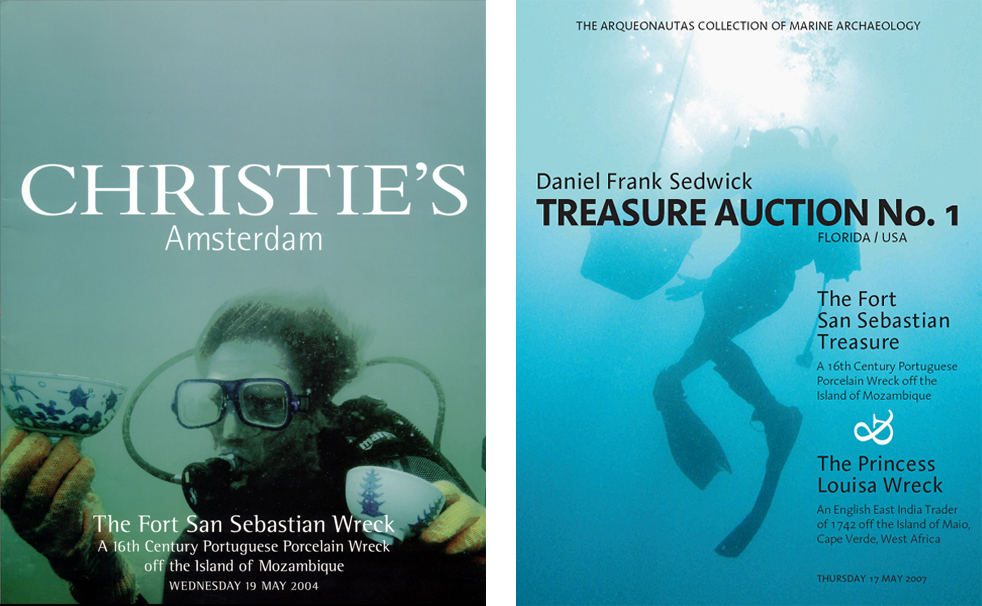
Some of the artifacts with market value were sold and thus summarily published, at least partially, in the Christie’s and Sedwick’s catalogues.
In his 2010 report Mr. Mirabal refers glass beads, some spices, and some gold weights.
Iron Concretions
No information.
Hull remains
Extensive hull remains were reported at a shallow depth, from 5.2 to 15.4 m. It is not clear whether any recording was done. To our knowledge, there are no sections and no scantling lists, we have not managed to find any information about the structural components, fastening patterns, basic dimensions, scarves, construction marks, tool marks, timber conversion, or even a list of the structural components observed. It seems that keel, keelson, floor timbers, first, second futtocks, and top timber were preserved, together with riders, deck knees, ceiling, stringers, planking and wales. The thickness of the planking is unknown.
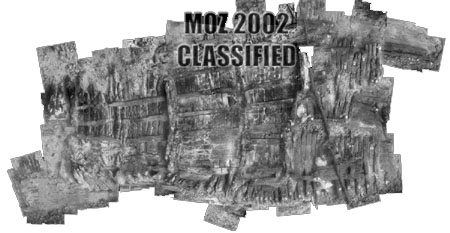
A portion of the stern seems to have been preserved at the time of the salvage operations, connected to the after portion of the keel, including the deadwood and the y-frames, but to our knowledge no information has been published regarding the existence of a stern heel or a stern knee. Pictures of a photo-mosaic and a site plan traced over it were published on the internet. It is not clear if these drawing was scaled.
The keel was reported to be preserved along 17.2 m and was characterized as the after portion of the ship.
The exposed hull seem to have been abandoned after the salvage operations and were seriously damaged as a result.
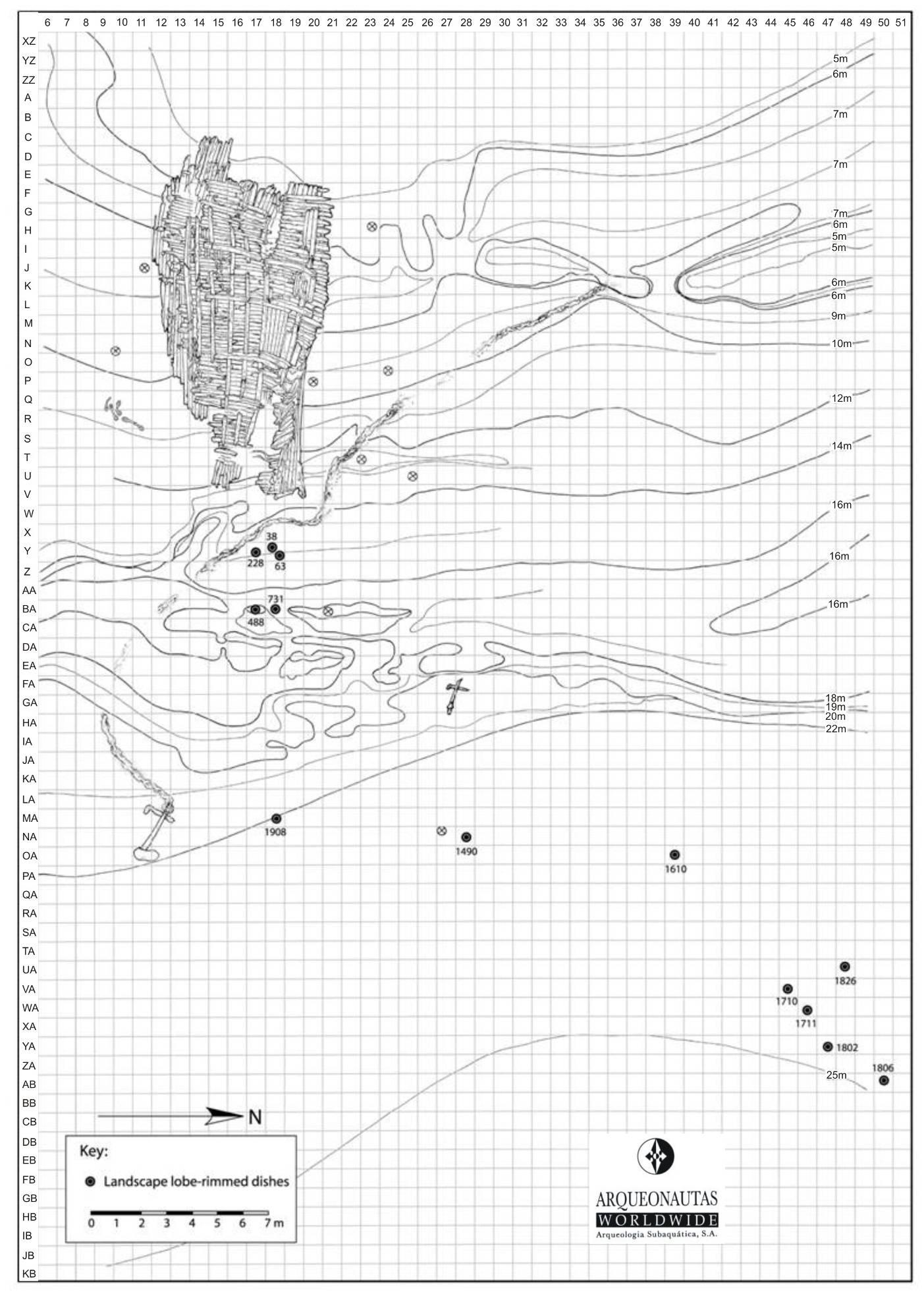
In or around 2009 archaeologist Alejandro Mirabal – working for Arqueonautas SA. – revisited the site and tried to cover what was left of it.
His 2010 report adds a considerable amount of information, regarding the fasteners and presents a drawing of a floor timber with what seems to be a Roman numeral “X”.
There is a site plan and a picture and a drawing of the mast step, which is atypical.
Some pictures of the hull structure included in this report suggest that there was an orlop deck, not planked, and a clamp and a waterway with the deck beam ends still in situ.
Although the historical research mentioned in the report is not supported by bibliographical references and the tentative identification of the shipwreck as the 1558 nau Espadarte – which departed Lisbon in 1554 under the command of Fernão Gomes de Souza, according to most sources – should be taken with caution because it contradicts most armada lists, a date in the third quarter of the 16th century seems plausible, and that makes this archaeological site one of the most important Portuguese shipwrecks ever found.
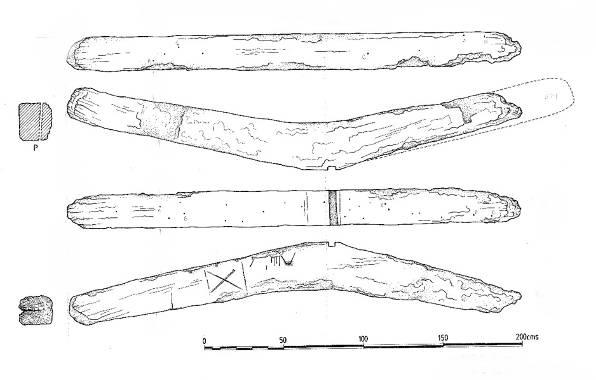
Its destruction by the treasure hunters is a disgraceful event because these hull remains were the best example of a large Portuguese merchantman ever found and their study would have filled a tremendously important gap in the history of technology.
Caulking
Not reported.
Fasteners
Iron nails, spikes, and bolts (Mirabal 2010).
Size and scantlings
No scantlings seem to have been published from this shipwreck site.
Wood
No timber samples or analysis were reported.
References
Bound, M., 2002. Mozambique / Progress Report on Underwater Archaeological Operations off the Island of Mozambique (December 2002).
Bound, M., 2005. “Once Upon an Island,” The Explorers Journal.
Duarte, R. Teixeira, 2012. “Maritime History in Mozambique and East Africa: The Urgent Need for the Proper Study and Preservation of Endangered Underwater Cultural Heritage,” Journal of Maritime Archaeology 7: 63-86.
Duarte, R. Teixeira, 2014. Resultados da avaliação do projecto PI/AWW respeitante ao patrimônio arqueológico subaquático na Ilha de Moçambique de 22 a 25 de Julho de 2014. Typed report. Maputo: Universidade Eduardo Mondlane.
Fonseca, Pedro Quirino da, 1964. “Pesquisas arqueológicas submarinas em águas de Moçambique,” in Monumenta, Boletim da Comissão dos Monumentos Nacionais de Moçambique, nº1, Moçambique.
Fonseca, Pedro Quirino da, 1972. “Algumas Descobertas de Interesse
Histórico- Arqueológico na Ilha de Moçambique,” in Monumenta, Boletim da
Comissão dos Monumentos Nacionais de Moçambique, nº8, Moçambique.
Mirabal, Alejandro, 2010. Report of the Espadarte (1558) shipwreck (IDM-002), Mozambique. Arqueonautas SA. Online PDF report.
